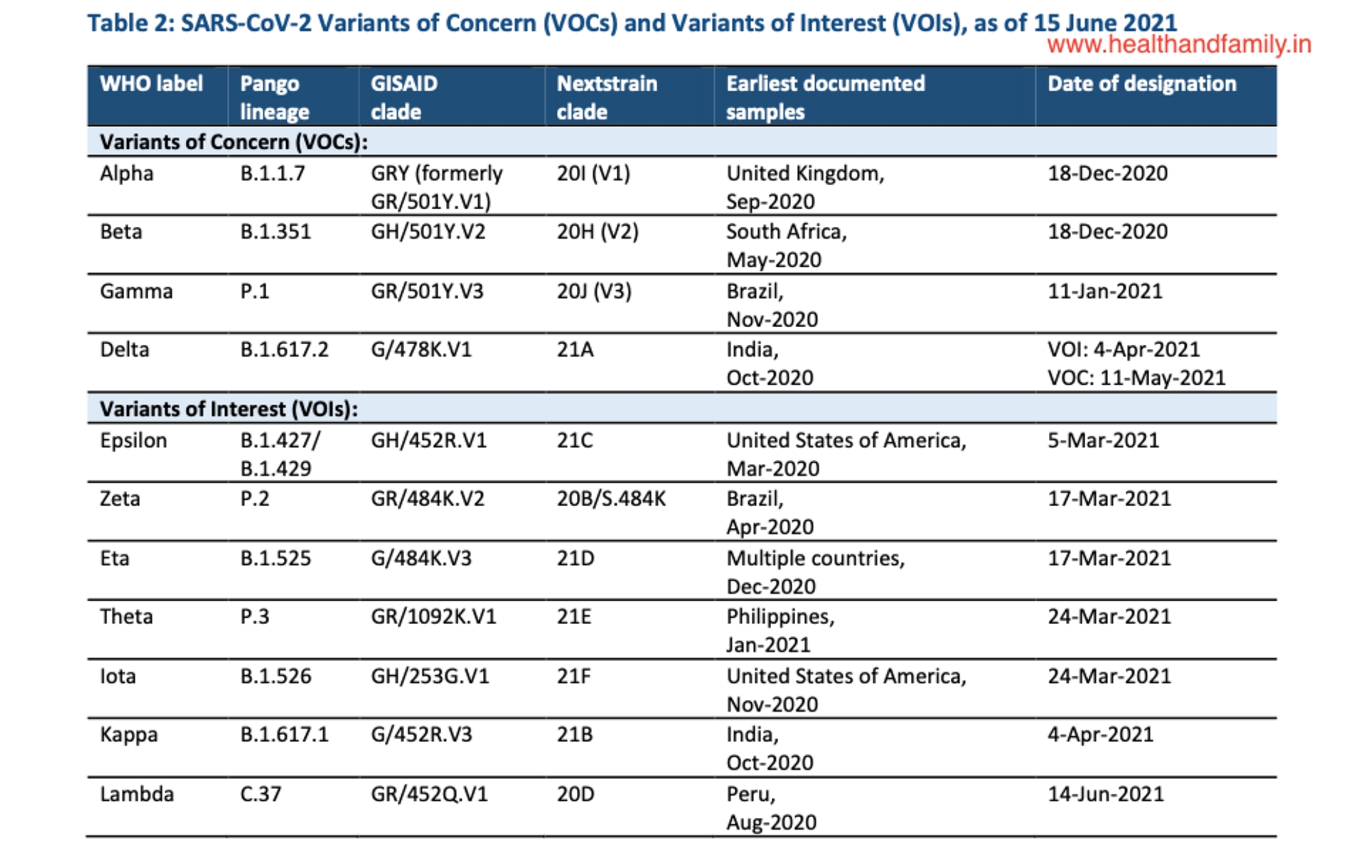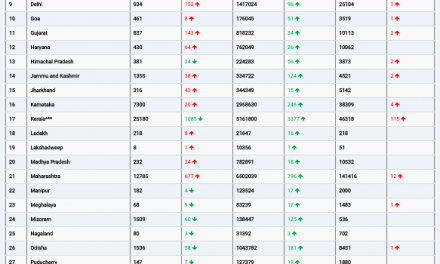In the context of the public discourse regarding detection of new variants, Member (Health), NITI Aayog, Dr. VK Paul has reminded the public that the newly detected Delta Plus Variant is not yet classified as a Variant of Concern. “The present status is that yes, a new variant has been found. This is as of now a Variant of Interest (VoI), not as yet classified a Variant of Concern (VoC). VoC is one in which we have understood that there are adverse consequences to humanity, which could be due to increased transmissibility or virulence. We do not know at this moment this about the Delta Plus variant.” Dr. Paul stated this, while addressing the COVID-19 Media Briefing at National Media Centre, PIB Delhi earlier this week.
Although in the recent weekly epidemiological update from WHO has highlighted the new variant of interest Lambda.
On 14 June 2021, a variant assigned to Pango lineage C.37, GISAID clade GR/452Q.V1, NextStrain clade 20D, was designated as a global VOI, and assigned the WHO label “Lambda”. This variant has been monitored as an alert for an extended period, and upon more information and updated assessments, is now considered as meeting the VOI working definition based upon evidence of continued emergence and suspected phenotypic implications.
Lambda has been associated with substantive rates of community transmission in multiple countries, with rising prevalence over time concurrent with increased COVID-19 incidence. The earliest sequenced samples were reported from Peru in August 2020. As of 15 June 2021, over 1730 sequences have been uploaded to GISAID from 29 countries/territories/areas in five WHO regions. Elevated prevalence has been noted particularly in South America in countries such as Chile (31% overall prevalence among submitted sequences since first detected in this location to date), Peru (9%), Ecuador (8%), and Argentina (3%). Authorities in Peru reported that 81% of COVID-19 cases sequenced since April 2021 were associated with Lambda. Argentina reported increasing prevalence of Lambda since the third week of February 2021, and between 2 April and 19 has increased over time, accounting for 32% of sequenced cases reported in the last 60 days – co-circulating May 2021, the variant accounted for 37% of the COVID-19 cases sequenced. In Chile, the prevalence of Lambda Lambda carries a number of mutations with suspected phenotypic implications, such as a potential increase at similar rates to variant Gamma (33%), but outcompeting variant Alpha (4%) over the same period.
Lambda carries a number of mutations with suspected phenotypic implications, such as a potential increased transmissibility or possible increased resistance to neutralizing antibodies. It is characterized by mutations inthe spike protein, including G75V, T76I, del247/253, L452Q, F490S, D614G and T859N; however, there is currently limited evidence on the full extent of the impact associated with these genomic changes, and further robust studies into the phenotypic impacts are needed to better understand the impact on countermeasures and to control the spread. Further studies are also required to validate the continued effectiveness of vaccines.

Geographic distribution of VOCs
As surveillance activities to detect SARS-CoV-2 variants are strengthened at local and national levels, including by strategic genomic sequencing and the sharing of sequences and supporting meta-data, the number of countries/areas/territories reporting VOCs has continued to increase. This distribution should be interpreted with due consideration of surveillance limitations, including differences in sequencing capacities and sampling strategies between countries.











